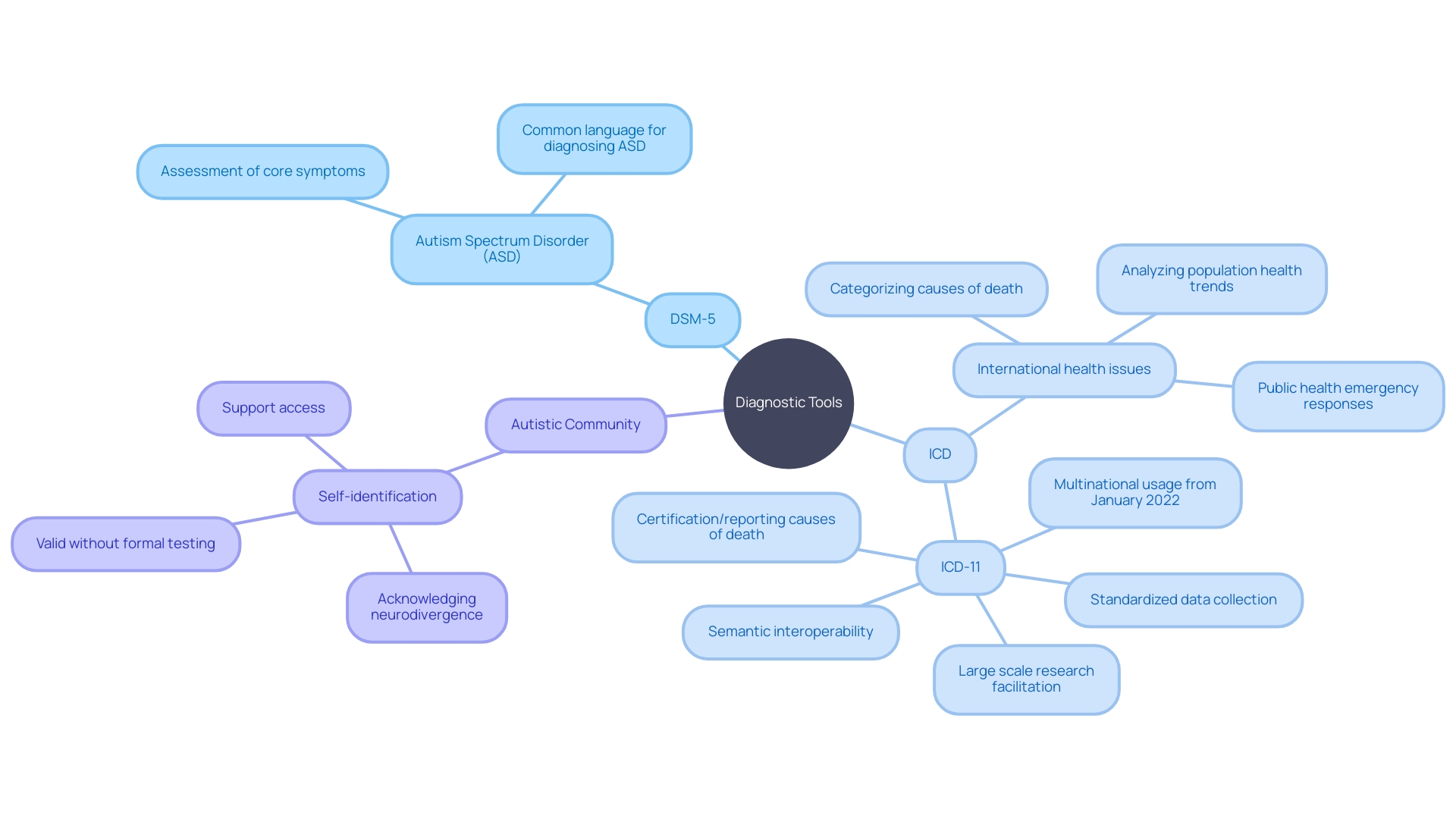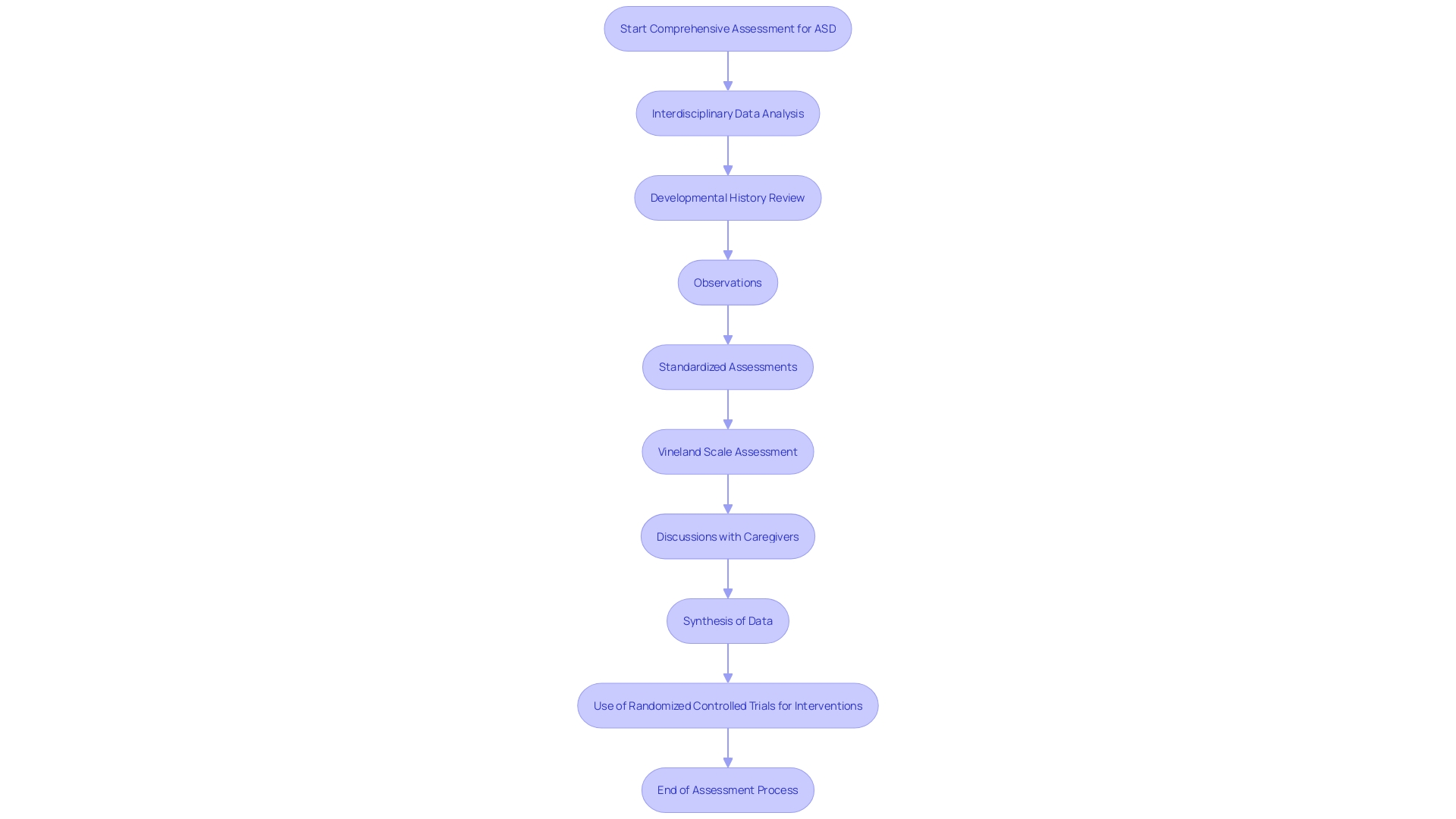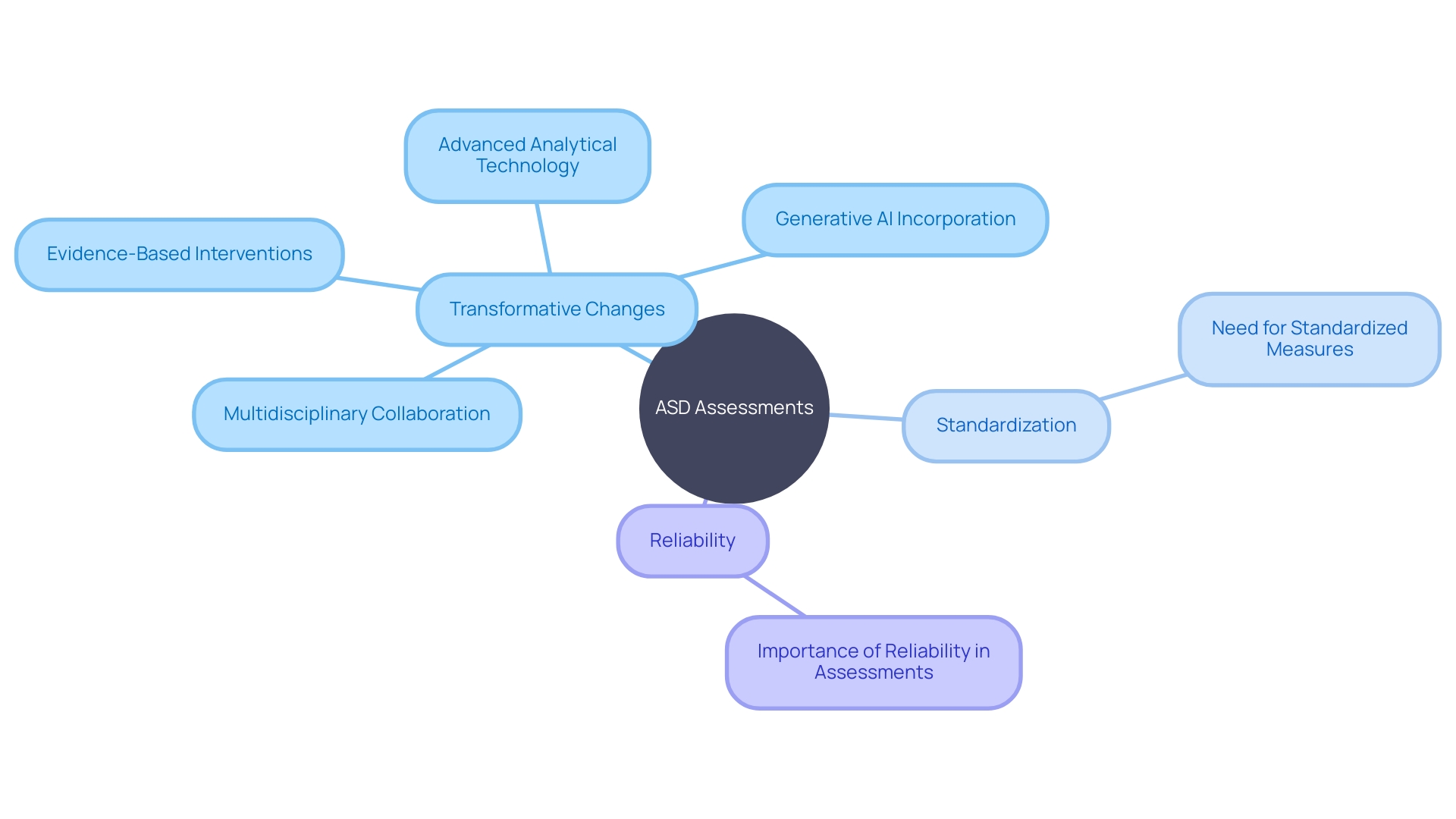Introduction
The path to understanding Autism Spectrum Disorder (ASD) goes beyond testing; it's about truly comprehending an individual's unique behaviors and development. In this article, we will explore the importance of a comprehensive evaluation for an ASD diagnosis, the screening tools used, the role of informant reports and direct observation, and the assessment of co-occurring conditions and developmental delays.
We will also discuss the significance of early detection and intervention, accommodations for individuals on the autism spectrum, and future directions in autism assessment and diagnosis. By providing guidance and resources, we aim to support and empower parent advocates navigating the journey of understanding and ensuring the well-being of their children with ASD. So let's dive in and explore this complex and important topic together.
Understanding Autism Spectrum Disorder Testing
The path to understanding Autism Spectrum Disorder (ASD) goes beyond the act of testing; it's about truly comprehending an individual's unique behaviors and development. The assessment for ASD is not a pursuit of a label but a detailed journey to uncover the nuances of each case, guiding professionals and loved ones toward the tailored supports and interventions that can make all the difference. It is essential to approach this process with the precision and clarity of a journalist, answering the critical who, what, why, when, and where that frame the individual's experiences.
The pursuit of a formal diagnosis is deeply personal and not necessary for everyone. For many within the autism and neurodivergent community, self-identification aligns with their needs. Given that research highlights flaws in the testing model, such as inconclusive results and design impairments that obscure the true efficacy and potential risks of interventions, the decision to engage with ASD testing is intentional and multifaceted, weighed carefully for its impact on one's journey to success and fulfillment.
The Diagnostic Criteria for ASD
Professionals utilize the Diagnostic and Statistical Manual of Mental Disorders (DSM-5) for the diagnosis of Autism Spectrum Disorder (ASD), which contains enumerated criteria reflecting the core symptoms of ASD. These include challenges with social communication, repetitive behaviors, and heightened sensory sensitivity.
Nevertheless, it's important to acknowledge the International Statistical Classification of Diseases and Related Health Problems (ICD) as another pivotal instrument in the ASD diagnostic narrative. The ICD provides a comprehensive system to analyze and report diseases globally, facilitating a common language for international health-related issues.
With a history spanning over a century, ICD classifications have enabled large-scale research, bolstering our understanding and management of human diseases. The 11th revision (ICD-11) has become instrumental, for instance, in categorizing causes of death, providing essential insights into population health trends and aiding in responses to public health emergencies. While formal testing is traditionally seen as the pathway to an ASD diagnosis, it is also acknowledged within the autistic community that self-identification can be a valid form of recognizing one's neurodivergence, particularly when formal testing yields inconclusive results or when a clinically recognized diagnosis does not impact an individual's access to necessary support.

Screening Tools for Autism Spectrum Disorder
Screening tools play a vital role in the initial assessment of ASD. These tools are designed to identify individuals who may be at risk of having ASD and require further evaluation.
Examples of common screening tools include the Modified Checklist for Autism in Toddlers (M-CHAT), the Social Communication Questionnaire (SCQ), and the Autism Diagnostic Observation Schedule (ADOS). These tools help professionals gather information about the individual's behavior and development, aiding in the determination of whether a comprehensive evaluation is necessary.
Comprehensive Evaluation for ASD Diagnosis
Understanding the intricacies of autism requires specialized evaluations, a point illustrated by interdisciplinary research. Experts in physics, statistics, medicine, and neuroscience analyze a broad spectrum of data including medical records and brain imaging studies.
This collaborative approach informs the comprehensive assessment process for Autism Spectrum Disorder (ASD), emphasizing the need for diverse expertise. During an evaluation, a multidisciplinary team delves into the person's developmental history and conducts observations and standardized assessments.
Their goals align with findings like those from a study of 367 autism treatment studies, which highlighted the diversity of measures used in the field. A key agreement amongst researchers is the use of the Vineland Scale to assess adaptive functioning, addressing practical aspects of independence and abstract comprehension.
Such assessments involve direct interaction with the individual and discussions with caregivers, aiming to synthesize all data for a precise diagnosis. Additionally, as autism research evolves, randomized controlled trials are becoming the norm, a shift from previous quasi-experimental methods. This ensures that the chosen interventions are supported by the latest and most reliable evidence. The importance of accurate testing is also reflected in the experiences of those within the autistic community. A diagnosis may not be necessary for self-identification or to access certain supports, yet some individuals may pursue it for personal reasons, despite the challenges and mixed results often associated with medical autism testing methods.

Role of Informant Reports and Direct Observation
Informant reports, which encompass detailed feedback from parents and educators, are pivotal in painting a holistic portrait of a child's behavior across varying environments. These narratives delve into the core of the child's social abilities, peer interactions, and behavioral patterns, all of which are crucial pieces of the autism diagnosis puzzle. Direct observation stands as an invaluable practice, allowing clinicians to evaluate these aspects in a controlled environment, offering a raw glimpse into the child's natural behavioral expressions.
Yet, recent research underscores the necessity for meticulous scrutiny of intervention studies. The recurring presence of design flaws within these studies signifies a gap in our understanding of their real-world impact on autistic individuals and emphasizes the importance of conducting research that truly resonates with, and respects, the autism community. Through the integration of both indirect informant reports and direct clinician observations, the process culminates in a more nuanced comprehension of a child's distinctive abilities and challenges, laying a robust foundation for effective, mindful interventions.
Assessing Co-occurring Conditions and Developmental Delays
When evaluating for Autism Spectrum Disorder (ASD), professionals take a holistic approach to ensure all aspects of a child's development are considered. Recognizing that ASD can present alongside other conditions such as ADHD, intellectual disabilities, or language impairments, the assessment includes screening for these additional challenges.
Acknowledging the interconnection between nutrition, lifestyle factors, and ASD is also critical. Experts in the field explore how elements like diet can influence a child's well-being, shaping the support and interventions to foster their overall growth and development.
The Importance of Early Detection and Intervention
Early detection of ASD is crucial for accessing timely interventions and support. ASD testing allows for early identification, which enables individuals to receive interventions that promote optimal development and improve outcomes. Early intervention services, such as speech therapy, occupational therapy, and applied behavior analysis (ABA), can significantly benefit individuals with ASD.
Accommodations for Individuals on the Autism Spectrum
After receiving an autism spectrum disorder (ASD) diagnosis, it becomes a collaborative effort between professionals, parents, and educators to tailor the environment to support the individual's unique needs. Strategies for creating inclusive spaces can draw from insights shared by Inclusion Canada and self-advocates, who emphasize the importance of accommodating neurodivergent individuals in all facets of life, including work, school, and community settings.
Visual aids, predictable routines, sensory-conscious adjustments, and personalized education plans are some of the accommodations highlighted by advocates to foster full inclusion. An example that illustrates the necessity for such accommodations is the challenge faced by neurodivergent individuals in open-plan workspaces, which underscores the broader issue of sensory overstimulation without proper environmental modifications. The valuable advice from self-advocates calls for reflection on how to construct environments that are not only welcoming but actively inclusive, ensuring that individuals with ASD can thrive to their fullest potential.
Future Directions in Autism Assessment and Diagnosis
Autism Spectrum Disorder (ASD) assessments are poised for transformative changes, achieved through multidisciplinary innovation and rigorous scientific endeavors. The integration of physicists, statisticians, physicians, and neuroscientists exemplifies the collaborative effort required to refine ASD diagnostics.
This alignment of diverse expertise signifies that future developments in ASD testing may encompass not only novel screening instruments but also advanced analytical technology. Clinicians now have the vantage to select interventions based on evidence from robust research methodologies, with randomized-controlled trials setting a new standard in evaluating intervention efficacy.
This shift in research approach signifies a commitment to precision and replicability in the findings that shape the field of ASD. Adding to this, the incorporation of generative artificial intelligence (AI), such as Google's Gemini, stands to revolutionize educational assessment and ASD testing.
The positive disruption anticipated by experts in the field indicates a movement away from traditional practices towards a future where technology bridges gaps in our current methods. Moreover, a comprehensive analysis of 367 autism treatment studies over 23 years highlights the need for standardized measures in ASD research. With a wide array of metrics used to evaluate IQ and communication skills, the consistency in using the Vineland Scale for measuring adaptive functioning underpins the importance of reliability in assessments. Parents and professionals must stay abreast of such advancements to make enlightened choices about ASD testing and interventions for their children.

Conclusion
In conclusion, understanding Autism Spectrum Disorder (ASD) requires a comprehensive evaluation that goes beyond testing. This includes self-identification, informant reports, observations, and screening tools.
While formal testing is traditional, self-identification and inconclusive results are valid alternatives within the autistic community. Screening tools like M-CHAT, SCQ, and ADOS play a vital role in identifying individuals who may require further evaluation.
A comprehensive evaluation involves a multidisciplinary approach and standardized assessments to consider co-occurring conditions and developmental delays. Early detection of ASD is crucial for timely interventions and support.
Services like speech therapy and occupational therapy can significantly benefit individuals with ASD. Creating accommodating environments with visual aids, predictable routines, and personalized education plans fosters inclusion and allows individuals with ASD to thrive.
Looking to the future, ASD assessments are undergoing transformative changes through multidisciplinary collaboration and technological advancements. Artificial intelligence and evidence-based interventions are reshaping the field. Staying informed empowers parent advocates to make informed choices about testing and interventions for their children. By understanding the importance of a comprehensive evaluation, utilizing screening tools, and staying informed about developments, parent advocates can navigate the journey of understanding and ensuring the well-being of their children with ASD. Together, we can support and empower individuals on the spectrum to live fulfilling lives.




